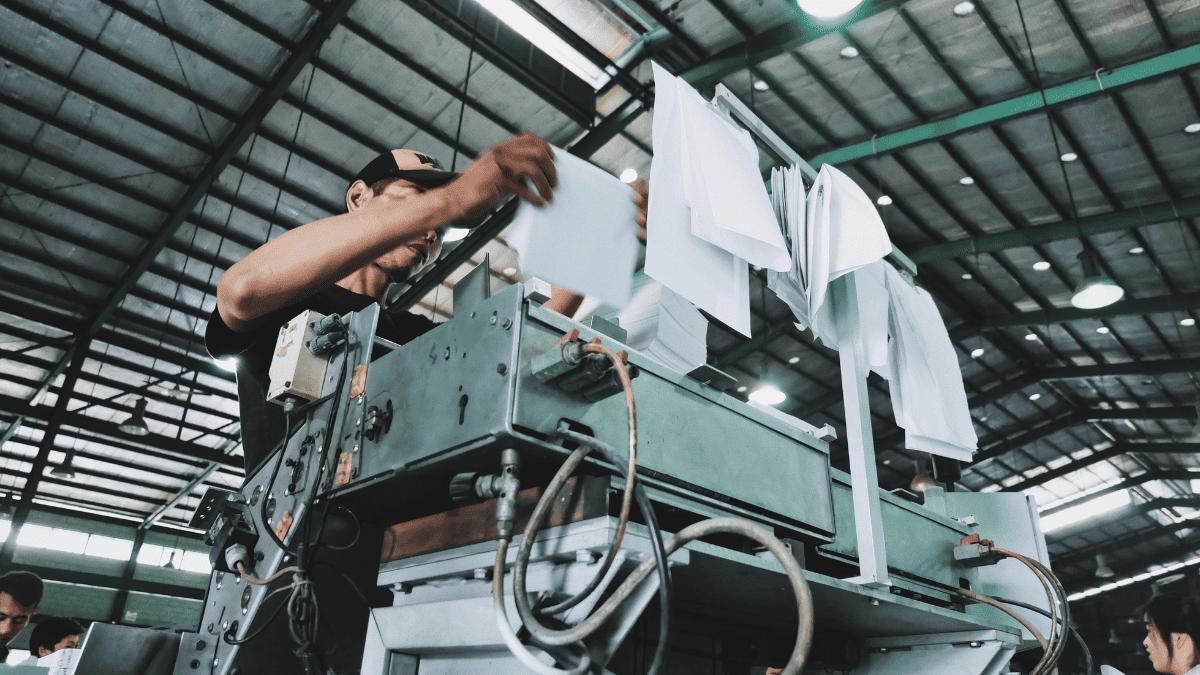Ever wondered how paper is made?
Welcome to Engineer Academy where we’re exploring an A to Z of Engineering – everything from acoustics to zoos.
In each episode, we spin the wheel to find out what type of engineering we’ll be exploring with the help of Engers, our engineering expert.
You can listen to the full series of the A to Z of Engineering here.
Let’s take a look at Paper Engineering.
Paper Engineering

The UK has a long history in paper, with the world’s first mechanical paper machine installed at Frogmore Paper Mill in 1803. The paper industry still plays an important role in the UK’s economy, employing almost 60,000 people and generating some £12 billion each year.
To start, let’s take a look inside a paper mill to find out how paper is made. And meet the team at DS Smith and their Kemsley plant in Kent. It’s enormous – Kemsley sits on a 150-acre site. That’s more than 100 football pitches, making it the largest paper mill in UK.

Quality paper needs quality fibre, and the fibre at this factory comes from recycled paper, some of which you and I might recycle in our homes. Not all paper is made from recycling, other paper mills might get their fibre from trees, arriving as logs on huge lorries.
Once the paper sent for recycling has been sorted, the bales of paper travel up a conveyer belt to a machine called a PULPER, which is a bit like a giant food mixer. As well as paper being added, contaminates like staples, sticky tape and polystyrene are removed, and the whole thing is mixed with water.
The pulped mixture is then pumped onto something called a forming wire that encourages all the fibres to go in the same direction. At this stage, it’s a very watery mix, containing less than 1% paper! So, as you can imagine, that water needs to be removed or otherwise – well, the end product will be a little floppy!
The forming wire moves across a series of ceramic foils and vacuums that reduce the amount of water in the solution to 75%.
More water is then squeezed out by a press, which also compresses the fibres in the solution so they intertwine to make a smooth and stronger material.
Starch is now mixed in to add strength, and our watery mix then passes through heated cylinders which dries out the solution into something which is more recognisable as paper. So far, from bales of recycled paper to the dryers, our paper has travelled 400 metres, and is now ready to be wound into enormous reels – each of which can be 7 metres wide, weigh 30 tonnes and contain 30 km of paper!

With the winders moving at 82 miles per hour, which is faster than a car on the motorway, all in all it takes just 37 minutes to produce a 30 tonne reel. Pretty speedy, eh! Once reeled, the paper is taken to a warehouse and when ready to go out to customers, Automated Guided Vehicles pick up the reels and load them onto the lorries, and off they go.
Did you know there’s an enormous range of different papers? There’s plain paper for writing and printing, paper for carrier bags and medical uses, and also cardboard which is used for delivery packages like pizza boxes and home deliveries. There’s even a special type of paper that’s used for coating plasterboard which is used for building homes and offices. How many different types of paper can you find in your home?

One of the cool things about DS Smith is that it’s working towards a circular economy using closed loop recycling. Now whilst that sounds fancy, it just means that by using recycled fibre, a cardboard box can leave the factory and return as recycling 14 days later. How amazing is that?
What’s also amazing are the people who work here in the paper mill – and there’s a multitude of jobs to be done! As well as machine operators and technicians who keep the equipment running smoothly, there’s logistic experts who get the paper ready for transport, and not forgetting the lorry drivers who bring the recycled paper here and take away the fresh paper.
And that’s our take on the letter P – it’s been a PLEASURE talking PAPER!
If you would like to check out some other types of engineering, why not check out Petroleum, Pharmaceutical, Plastics, Product Safety, Propulsion or Public Health engineering!
Join us again next time to spin the wheel and explore another letter in the A to Z of Engineering!
Engineer Academy: A to Z of Engineering.
Created with support from a Royal Academy of Engineering Ingenious Grant – and from DS Smith
Add a commentA to Z of Engineering
Engineering is all around us! We’re exploring an A to Z of everything engineering from acoustics to zoos.
More From A to Z of Engineering






